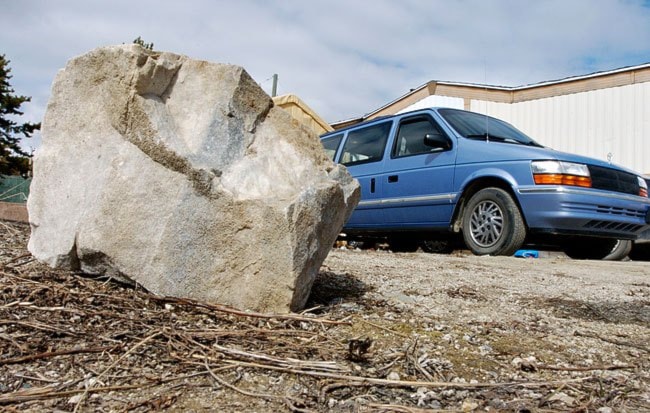A resolution to the Beaufort Sea border dispute may be around the corner.
The long-running legal spat between Canada and the United States involves a disputed swath of ocean 14 times the size of Lake Superior.
The contested zone matters because both countries believe that, as polar sea-ice continues to melt, there is potential in the area for both commercial fisheries and oil and gas exploitation.
Until recently, it has appeared as if the dispute was a zero-sum game, in which one country’s gain would be the other’s loss.
But that’s no longer so, says Michael Byers, an Arctic sovereignty expert and professor at University of British Columbia.
Byers helped organize a meeting of policy experts in Anchorage two weeks ago to discuss the dispute, and they arrived at a surprising conclusion: Canada’s negotiating position ultimately benefits the United States, and vice versa.
“Anyway you skin this, it’s a win-win situation,” said Byers. “You couldn’t have designed a better solution.”
It works like this. Canada holds that the boundary ought to be an extension of the border between Alaska and the Yukon. The United States, meanwhile, argues that the boundary should extend perpendicular to the coast, resulting in a line that veers further east, at Canada’s expense.
But this picture is changing, thanks to ongoing efforts by Canada and the United States to map the extent of the continental shelf in Arctic waters. International law allows countries to extend their reach beyond 200 nautical miles when the seabed extends further, as is the case in the Beaufort.
And it turns out that the disputed zone in the Beaufort takes on a very different shape beyond 200 nautical miles. The American boundary would need to reverse its trajectory and begin to sharply tack west, thanks to the presence of Canada’s Banks Island and the American’s use of the principle of equidistance in their arguments.
This means Canada looks likely to win more seabed under America’s scheme than it would under the Canadian proposal. “And that changes everything,” said Byers.
Both parties now have an incentive to resolve the dispute. This, in turn, may even help push forward stalled negotiations over other disputed areas, most notably Canada’s asserted control over the Northwest Passage, said Byers.
The Canadian government recently indicated it would be willing to sit down with Americans with an aim of ending the Beaufort deadlock. But before it does so, Byers recommends they first take up the matter with the Inuvialuit.
After all, they have a stake in the disputed zone too. When the Inuvialuit Final Agreement was struck in 1984, it was assumed that the settlement zone would extend to the US-Canada border, as defined by Canada.
If part of their settlement area were ceded to the United States, Inuvialuit would be entitled to compensation, said Byers.
And the governments of the Yukon and the Northwest Territories should have a say, too, said Byers. That’s because some in the NWT hold that their jurisdiction extends across Yukon’s North Slope.
It would be smart to bring these Canadian parties on-side before the serious talks begin with the United States, said Byers.
The solution is simpler than it might look, he insists.
“This isn’t rocket science,” Byers said. “It’s applied geometry.”
Contact John Thompson at
johnt@yukon-news.com.
